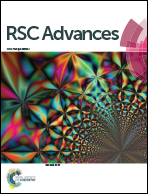Manganese oxide – an excellent microwave absorbent for the oxidation of methylene blue
Abstract
Microwave-induced oxidation is an effective method for degradation of organic pollutants with high concentrations in wastewater. In this study, manganese oxide (MO), a mixture of 74% akhtenskite and 26% ramsdellite was used as an oxidant for the microwave-induced oxidation of methylene blue (MB). With 0.1 g of MO and 2.5 mg of MB, the MB removal efficiency was about 99% under 10 min microwave irradiation (MI). The oxidative capacity of MO in this study was closely related to the concentration of H+. A strong acidic condition was optimal for MB degradation in the presence or absence of MI. The intermediates of MB degradation from C16H18N3S to C14H13N2OS, C13H11N2OS, and C12H9N2OS were identified by LC-MS. Network analysis described the excellent microwave adsorption property of MO which was mainly attributed to its dielectric loss. The maximal microwave reflection loss was about −21.23 dB for a sample that is made of 70% MO and 30% paraffin with a thickness of 6 mm. DOS calculation showed that the unit cell of akhtenskite with two manganese ions had the natural spin magnetic moment (2*Integrated Spin Density) of 6.0 which is in accordance with the theoretical calculation of two Mn4+ which could help the hysteresis loss under microwave irradiation. Considering the variable valence of MO and its zero electric dipole moment, it was deduced that charge transfer was the main mechanism for causing the dielectric loss.


 Please wait while we load your content...
Please wait while we load your content...